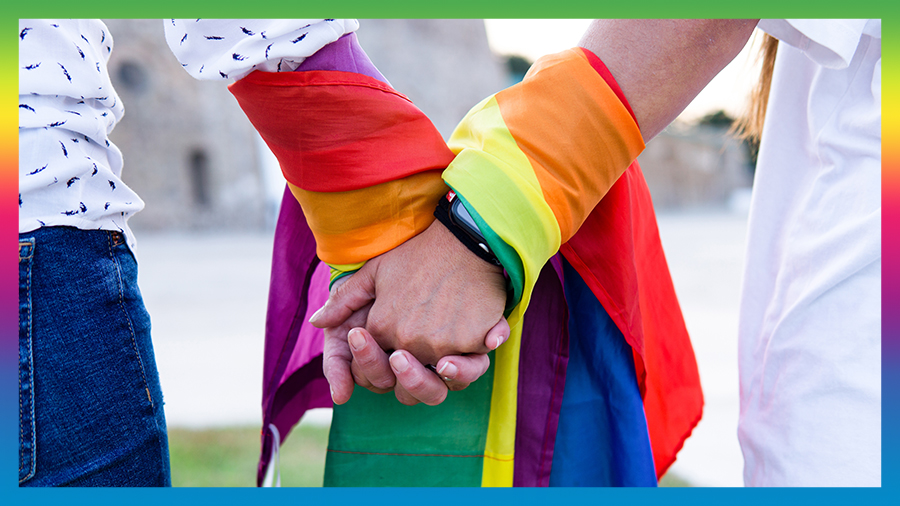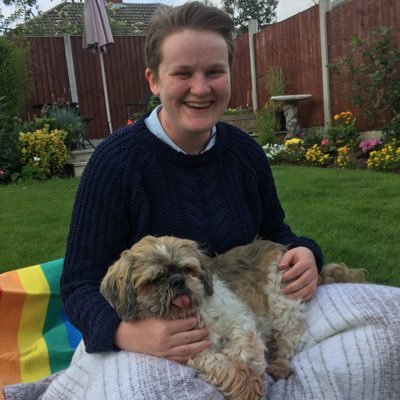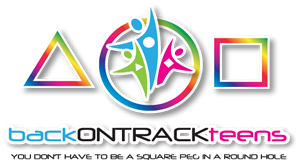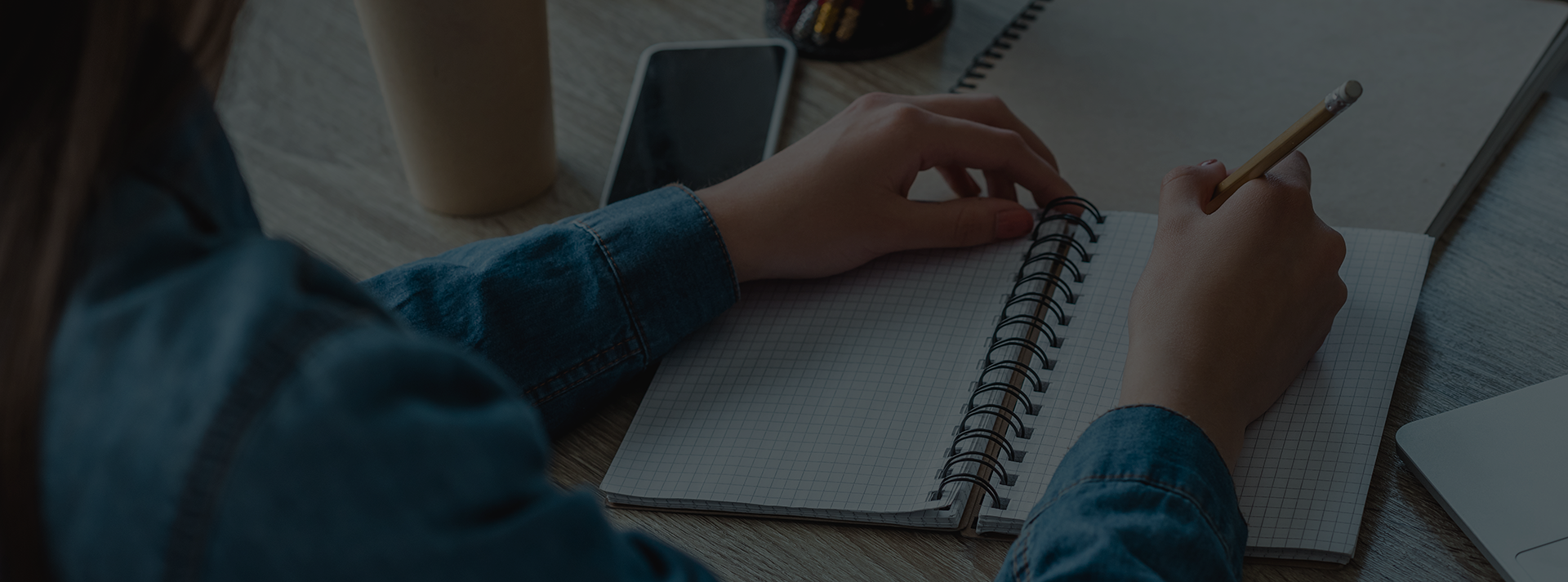
21 Sep Hannah’s story: It’s slightly more complicated explaining asexual
Hey – thanks for having us on your screen. Welcome to the Back on Track Teens blog for young people and those young at heart.
You’ve loaded a blog article that’s part of a mini-series about gender and sexual identity*. The mini-series shares 11 wonderful and inspiring stories from young people who identify as LGBTQ+. Feel free to read on but you may want to pause and have a quick scan of the opening article to give a bit of context around the collection of stories and resources available. Please click here to read the first article.
“I thought I was apathetically straight!” – Hannah
Continuing the gender and sexual identity mini-series, this week we’re exploring asexuality
Hannah, who runs her own video production company and is a freelancer for local BBC radio stations identifies as gay and asexual. Here’s her story.

Hannah’s story
Name: Hannah
Age: 25
Pronouns: She/her
Sexual identity: Gay and asexual
Occupation: Videographer
“I identify as gay and asexual, which I guess, having the two identities, is a bit different from what most people would expect. It’s slightly more complicated explaining asexual because a lot of people will sort of identify [based on the] gender that they are attracted.”
What is asexuality?
Hannah explains asexuality refers to experiencing no sexual attraction towards any gender and having little to no interest in sexual activity.
When someone identifies as gay, they may experience sexual and romantic attraction to individuals who are the same gender as them. An asexual person will experience little to no sexual attraction to anyone (regardless of gender), however they are still able experience and enjoy romantic attraction.
“For myself identifying as gay and asexual, I’m romantically attracted to other women, but I’m not sexually attracted to anyone – it’s called the split attraction model – having a romantic identity and a separate sexual identity.
“It’s kind of hard for me to say what sexual attraction is because I don’t experience it at all. I think it’s very hard to work out that you’re asexual because you’re kind of noticing an absence of something rather than noticing something. [A realisation] moment for me was when I was in McDonald’s with one of my friends and she just looked at a guy and said, ‘I’d tap that’ and I was like, ‘How can you know just from this person walking past’ and she’s like ‘yeah but you just know don’t you?’
It was at that point that I realised maybe there’s something going on here that I don’t really understand because, no, I don’t know what you know!”
Hannah describes herself as being unmarketable to, which is a good way to relate to how being asexual might feel. As an example, if you are watching television or flicking through a magazine and see the typical adverts sexualising perfume, lingerie, makeup and clothes the attraction aspect is absent for Hannah.
Questioning your sexual and gender preferences
“I realised I was asexual just before I turned 18, which is not that late, but I think a lot of people are realising their sexuality earlier these days. It’s harder to twig onto and I think there are people going about their whole lives without realising they are asexual.
I knew I was different after the McDonald’s incident, but I didn’t know the terminology until four months later. One night, [my best friend who I’d had all throughout secondary school] came out to me as gay and I was like, ‘okay, that’s a surprise’, but it also made me think, ‘okay, that’s why you haven’t been interested in talking about boys, but why have I not been interested in talking about boys?
I started to look into it a bit more and stumbled across the word asexual. I’d never known anything like it, but it was just like the final puzzle piece clicked in my head. I read the definition and was like, ‘oh my god that’s me’. It was a very nice moment to be honest and I spent a week researching online to find out about asexuality and found forums and a nice sense of community. I still don’t know that many people in real life who are asexual but certainly finding that online community was a massive move for me.”
The misconceptions around asexuality
Interestingly, Hannah thought she must have been straight before identifying as asexual because she didn’t have any other reason to think otherwise.
“Being a late bloomer and not meeting the right person are definitely ones that teenagers and younger adults will get thrown at them. I thought I was apathetically straight!
Some asexual people may see themselves as broken, or other people see them as broken. Certainly in the past it was treated as a medical condition not having a massive sex drive, but I think it’s just separating the difference between having a sex drive and being sexually attracted to other people. Asexuals can have sex drives, but it’s just not necessarily directed towards anyone. Also people may not know the difference between sexual attraction and sexual desire, or they might think that all asexuals are celibate, which is not the case. A lot of asexuals might enjoy the feeling of having sex but just not feel that they want to have it with a particular person.”
Many people within the LGBTQ+ community will find labels validating. As Hannah relates, asexuality is not the most common orientation and as such, this can lead to experiences or feelings of alienation.
Media coverage and advertising is geared towards the misconception that sex is something every person should naturally be very interested in. Knowing that having limited to no sexual drive or interest in sex is a real thing and completely normal can be incredibly validating.
Hannah relays how in some online forums, she came across people in their sixties who shared that they’d finally realise they aren’t broken since they discovered a word for how they feel about sex.
What is it like being in a relationship with someone who’s not asexual?
Hannah’s fiancée Becca was the first person she was ever really attracted to and it helped that they were friends for several months before becoming a couple.
“I think the main thing is you’ve just got to have really good communication. I’m reading a book about this now, which is really helpful and covers a lot of the standard ideas around consent that don’t work great for an asexual and non-asexual couple. Consent is yes or absolutely not, and it has to be a really enthusiastic yes, whereas for an asexual person it might never be an enthusiastic yes. Instead, it might be a ‘well I trust you and I am comfortable with you’. This is something that makes you happy and I get some enjoyment, so I’m happy to do it on that basis.”
Solid communication, especially when it comes to sexual intimacy is everything in a relationship however you identify.
“It’s all about your feelings now in the present moment.”
What was it like to ‘come out’?
“I came out to my mum and a couple of friends not long after realised I was asexual, mainly because I just wanted the questions of when I was going to get a partner to stop! You know what parents can be like, and grandparents, and there’s only so many times you can say ‘I’m more interested in studying right now’ before they start to smell a rat.
Recently I’ve been making more of an effort to come out as asexual because I really feel like there needs to be more visibility around it. If people can know one asexual person, then that’s one more than they might have known before, which was probably none.
I didn’t realise that I was gay until I got with my partner Becca, which was coming up to 20 years old, so it was about two years later, so yeah, I came out as asexual before I came out as being romantically attracted to women.”
It’s important to explain the terminology around gender and sexual identity to increase awareness and understanding. Hannah says that if people don’t get asexuality, she positions her explanation as: ‘You know how you can look at someone of the same gender and appreciate they are attractive but have no desire to do anything beyond that?’ When people nod because they can relate to the question, she confirms that’s exactly how it feels.
How asexuality is represented in the media
“The only time people hear asexual is in terms of cell reproduction in year nine. People believe it’s not possible.”
Lack of representation of LGBTQ+ identities in popular culture is one of the many ways that these identities are discriminated against. While this is beginning to change in some contexts, there are hardly any asexual characters represented in films and TV shows.
Media representation of people who identify as LGBTQ+ often comes in the form of a character overcoming a trauma or tragedy. This hyper-dramatisation has the opposite effect of normalising these identities.
Hannah agrees that educating people gently through popular culture can have a positive impact but that it must be accurate.
“I actually get kind of scared when I hear about asexual representation because in the past big showrunners have got it horrifically wrong. When there is so little representation of something, if a big show gets it wrong then a lot of people get the wrong idea, and it is damaging.
I prefer to read a book about, say, a space explorer and they’ve got all these interesting things about them and by the way they like girls but it’s just part of their personality. Like my personality isn’t all about being gay. I’d like to think there’s lots more things about me like, I like skateboarding and play the guitar – there’s a lot of things to my personality and my sexuality is only a small bit of it. I much prefer TV shows to just have queer characters but perhaps not making a massive deal about it terms of asexual representation.”
What resources are out there to help people learn more?
“The main one is The Asexuality Visibility and Education Network (AVEN). There’s loads of information, forums and topics for older people and couples too. There’s a nice community on Tumblr and some good work being done on Instagram using the hashtag #Thisiswhatanasexuallookslike. Yasmin Benoit is an activist, person of colour and a lingerie model and so breaks all the stereotypes.”
What advice would Hannah give to her younger self if she got the chance?
“I would tell myself to chill out a little bit [and] that you’re not going to feel alone for your whole life. The word will come and the second it does you’re going to feel more secure in yourself and you’re going to have a partner who’s loving and supporting. It will all click into place, it’s just a case of giving yourself the time to explore your identity.” Hannah
Listen to Hannah's story
Choose the life you want to lead
To listen to more stories like Hannah’s please check out the full podcast series. It would be incredible to hear your thoughts and stories too, so please share them with us by connecting on social:
Remember, you are who you are and you’re magnificent just the way you are.
“I think being gay is a blessing, and it’s something I am thankful for every single day.” Anderson Cooper
Thanks for reading…
Creating the gender and sexual identity mini-series has been an incredible experience for the Back on Track Teens team.
- I encourage you to go ahead and download our free eBook, which brings the interviews together with a huge collection of information, resources and inspiration.
- Subscribe to the Spark to Your Success podcast here.
- Access insightful stories, helpful exercises and more resources on our blog.
- Refer to the Back on Track Teens LGBTQ+ glossary here.
- Order ‘The Spark to Your Success – Helping Teens Build Resilience’ here.
- Order ‘The Spark to Your Success – Mindset Magic for Teens’ here.
Are you a parent or caregiver of a young person who may be experiencing challenges around gender and/or sexual identity? Book a session with TeeJay Dowe
Work at a school or organisation and want to know more? Book an awareness training session
*The blog articles capture real stories and the topic of conversation is frank. Its purpose is to elevate the voices of people within the LGBTQ+ community, answer questions, provide resources, and offer support.


No Comments